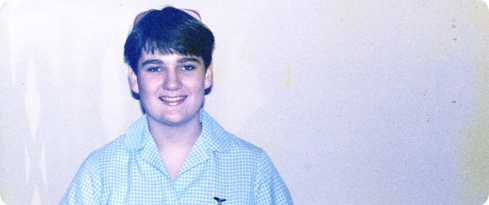Your views

Your feedback is vital to us as we continue to increase the quality of our services.
You are here:
Date: 23 February 2025
Time: 04:09

UHB histories: interview with Fiona Walsh
Megan Evans from University Hospitals Birmingham NHS Foundation Trust’s (UHB)Communications Team had the pleasure of catching up with Fiona Walsh, a resuscitation officer at the Trust. Fiona talked about her time at Selly Oak Hospital (SOH) and the move to the new Queen Elizabeth Hospital Birmingham (QEHB).
The story of a resuscitation officer
Fiona Walsh joined the Trust in September 1986. At the tender age of 18 she began her training at SOH, and was in the second year of students to use the new training course ”Project 2000”, designed to raise the hospital’s quality standards.
She later qualified and worked on medical ward B1 for two years. With her career still blossoming, Fiona began work on Coronary Care for four years and completed a range of special care courses to add to her list of qualifications.
After eight years of working within at SOH, she started a new job at Heartlands Hospital as a sister. She was a nurse in Accident and Emergency, where she worked with chest and heart pain patients. This post lasted only eight months; “I missed Selly Oak too much!”
Fiona went back to Coronary Care at SOH in 1995 and stayed there until 2004. She then went on to develop her career and became a resuscitation officer. She has worked in this post from 2004.
Resuscitation
Fiona explains: “The main elements of my job are to teach, attend cardiac arrests and to look after the division of staff, making sure everyone has all the training they need.”
Fiona teaches staff neonatal (baby), paediatric (child) and adult resuscitation. As a resuscitation officer, she has to teach both basic and advanced methods of resuscitation to all grades of staff within the Trust.
Memories … Smokey Joe’s and being a beginner
Fiona recalls: “Smokey Joe’s was the best place to be in lunch and coffee breaks at work. We called it Smokey Joe’s because it was at the time when smoking inside was completely normal. Everyone would go to Smokey Joe’s for their cigarette breaks because it was warm, cosy and like a shelter for everyone at work!
“If you were having a bad day, the staff would make sure they supplied you with the best comfort food, putting you right under their wing and cheering you up. Smokey Joe’s cheese and beans was my weak spot!”
Fiona remembers beginning her training: “I remember coming for my interview at what is now the Diabetic Centre, but was then the School of Nursing. I was asked what life experience I had. I had nursed my grandmother for many years so I was able to explain all the different things I had to do to assist her.”
Throughout the years uniforms have changed and developed at the hospitals: “I will never forget the day we all received our first nurse’s uniform. It was a blue long dress and a white nurse’s cap with one red stripe. The red stripe meant that we were in our first year of training; we wore them with pride as it was a real achievement to be awarded with a nurse’s cap with a stripe! We were terrified of the responsibility it brought. Everyone knew we were new because of our one red stripe, as other people had two or three stripes, but we were proud to even achieve our one!”
Within her years of training to be a nurse, before she earned her diploma, Fiona lived in nurses’ accommodation. She had a lot of fun living with fellow trainee nurses, dressing up to fundraise money and attending Christmas and New Year parties - it was an unforgettable period in her life.
The big move
The big move to QEHB is proving to be an exciting process. Fiona expressed this: “The new hospital looks fantastic. There’s no doubt the facilities there will help us develop as a hospital.
“Part of our department has moved into the new Queen Elizabeth Hospital Birmingham already - nothing has gone wrong or been complained about so I’m sure all will be fine when we’re all in!”
By moving into the new hospital, the Trust is allowing its facilities to keep up with its developments and specialities. Fiona said: “Drugs and percutaneous coronary intervention procedures have made recovery for heart attack patients significantly faster. Being able to open up the blocked arteries immediately and inserting a stent to prevent the blockage is something we would not have even thought about many years ago. Medical knowledge has developed significantly.”

Getting here
Information about travelling to, staying at and getting around the hospital.

Jobs at UHB
A great place to work. Learn why.


